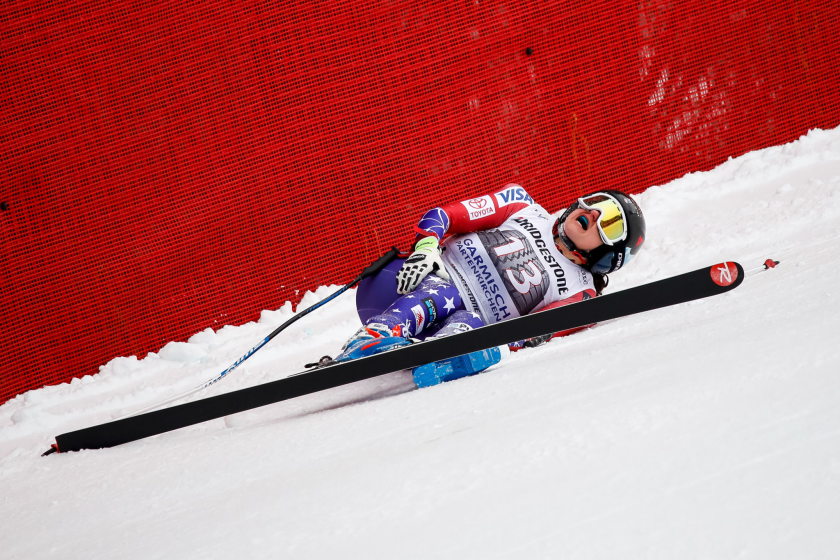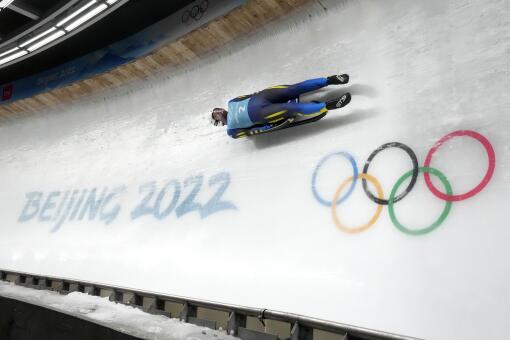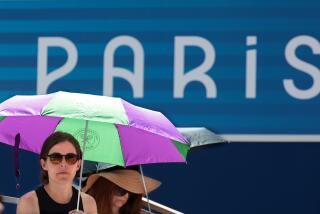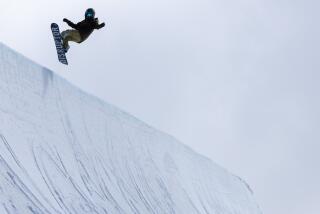Frigid Beijing-area temperatures ramp up efforts by cold-tested Olympians to keep warm
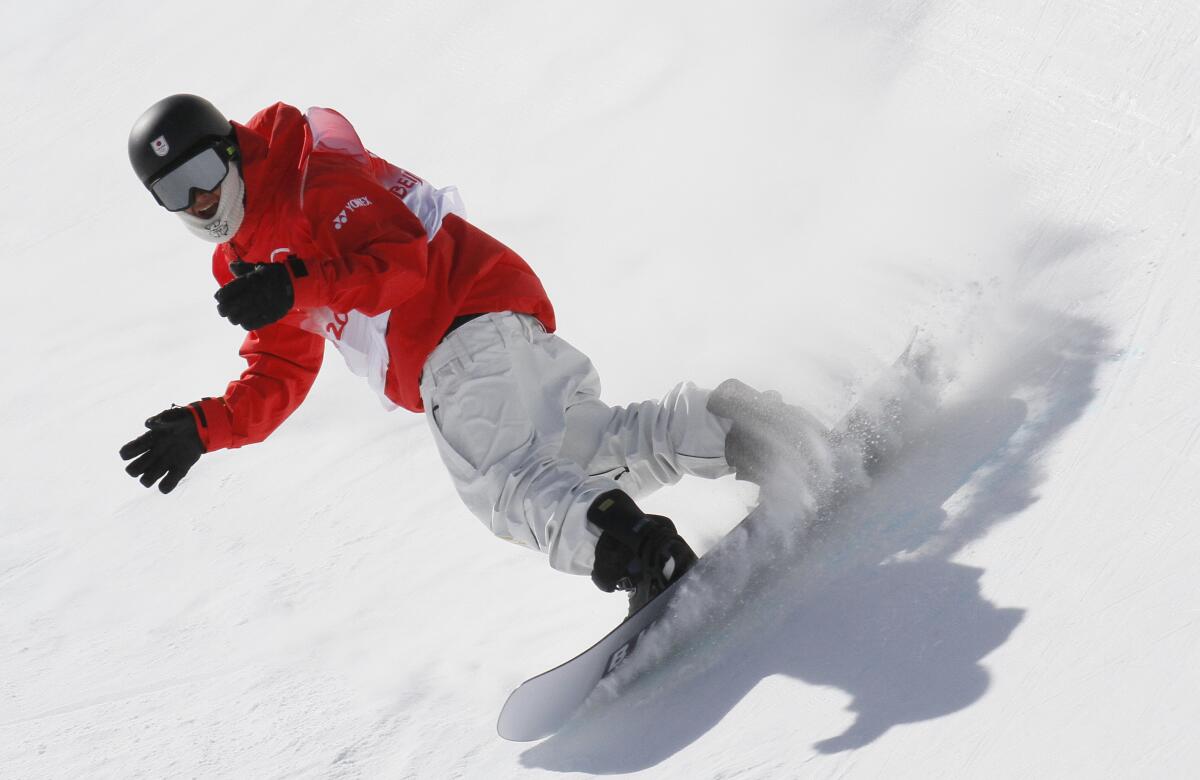
- Share via
BEIJING — The sun had set and a frigid night wind blew across the mountains as Brad Wilson attempted to explain himself. Puffs of condensation from his breath settled on his eyelashes, freezing instantly.
“It’s definitely been cold-cold,” he said.
The Montana native knows something about inclement weather. He arrived in China last week with a decade’s worth of experience as an elite moguls skier, competing in some of the chilliest places on the planet.
Which made it surprising that, during his first few days at the Beijing Olympics, Wilson managed to catch a touch of frostbite.
“The very last part of the chairlift is the coldest part,” he said. “The wind just kind of hits your face and it got my nose a little bit.”
Olympic skiers must endure falls and crashes, often leaving them with gruesome and painful injuries. But in their minds, the reward is worth the risk.
Much has been made of the dry winters in Yanqing and Zhangjiakou, the areas northwest of Beijing where ski and snowboard events are being held. Olympic organizers have needed to blow artificial snow day and night to compensate for a lack of the real stuff.
But temperatures in the teens? Bone-chilling gusts? The Beijing Games have no shortage of those.
“We’re putting on as many layers as we can but still everything is freezing,” biathlete Hanna Sola of Belarus said. “You can see everyone waving their hands, jumping on the spot.”
With temperatures dipping toward zero and winds gusting to 40 mph at some venues, the art of keeping warm has been a popular topic of discussion. That might seem like no big deal for winter athletes, but it is.
Climate change has rendered their seasons steadily shorter and more temperate. Fake snow and a sunny sky have become more common than not on the World Cup circuit.
“A lot of our races in Central Europe have been quite warm,” U.S. biathlete Deedra Irwin said. “We haven’t had that many races below 15 degrees in the past two or three years.”
Though the Winter Olympics in Pyeongchang, South Korea, four years ago were near frozen, previous host cities have felt downright balmy. The coastal resort of Sochi had its share of short-sleeve afternoons in 2014 and Vancouver wasn’t much chillier in 2010.
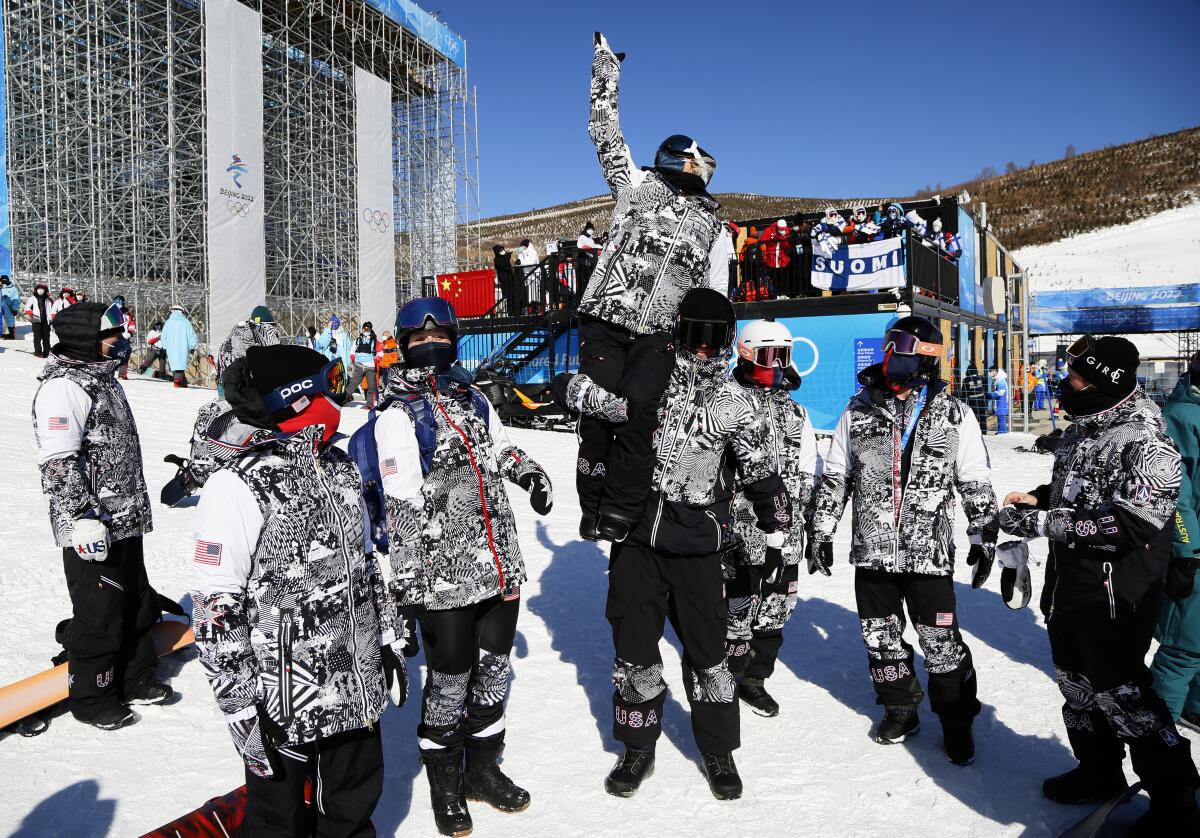
Genting Snow Park in Zhangjiakou is a different story, with midday temperatures rising no higher than 6 degrees.
“It’s one of the coldest places I’ve ever been on Earth,” said American skier Aaron Blunck, who has competed there before. “It makes your body get stiff.”
Dressing in layers — the standard approach to staying comfortable — doesn’t always go far enough on brutal days when the wind cuts through even the best technical gear.
Some veteran skiers and snowboarders add heated socks and hand warmers to their outfits. For the women’s 15-kilometer skiathlon at the National Cross-Country Skiing Center on Saturday, racers wore neck gaiters stretched over their chins and head coverings tugged down tight against the 12-degree afternoon.
Warmups have become essential as a way of raising body temperature before competition. Moguls skier Jaelin Kauf, who is Wilson’s girlfriend, planned to stay moving throughout her competition.
“Just rub around to keep the muscles warm or just do a little running in place or jumps,” she said. “Little things like that, just to keep everything from stiffening up.”
Lips can dry and crack. Exposed cheekbones and noses need protection too. Zinc works for both ultraviolet rays and icy winds but some athletes prefer specialized products such as Dermatone, a pomade that comes in round tins like shoe polish and promises to deter frostbite.
“I used to live in Fairbanks, [Alaska],” Paralympic skier Grace Miller said. “We used to put Vaseline on our cheeks so they wouldn’t get really cold and freeze.”
If that isn’t enough, special cloth tape can be plastered across bare skin. Therese Johaug of Norway won Beijing’s first gold medal in that skiathlon race with strips of fluorescent pink on her cheeks and the bridge of her nose, saying: “It’s a lot of wind.”
The cold has affected athletes in other ways.
Mountain venues near Beijing have looked almost alien, with swaths of fake snow cutting through acres of brown, barren mountainside.
Artificial surfaces work well for some events, such as alpine races, because of their consistency from top to bottom. Ragnhild Mowinckel of Norway praised the downhill run, calling it “extremely grippy and aggressive.”
But on the cross-country course, skiers had to adjust on the fly, moving between sections of deep snow and others that ran thin. Moguls were treacherous for another reason.
“When the snow is very, very cold, it gets sticky because your edges kind of freeze to the snow,” said Wilson, who was making his third trip to the Olympics. “It’s kind of like skiing on Styrofoam where it doesn’t slide very well.”
A hard surface can make for painful crashes.
“It’s going to hurt and not be very forgiving, which definitely is good incentive to keep you on your feet,” Kauf said.
The women’s slopestyle final in Zhangjiakou on Sunday caught a break when winds calmed down but, at the national alpine venue in Yanqing, about 40 miles away, unpredictable gusts kept changing direction and forced postponement of the men’s downhill. A jump that left skiers vulnerable in midair was of particular concern.
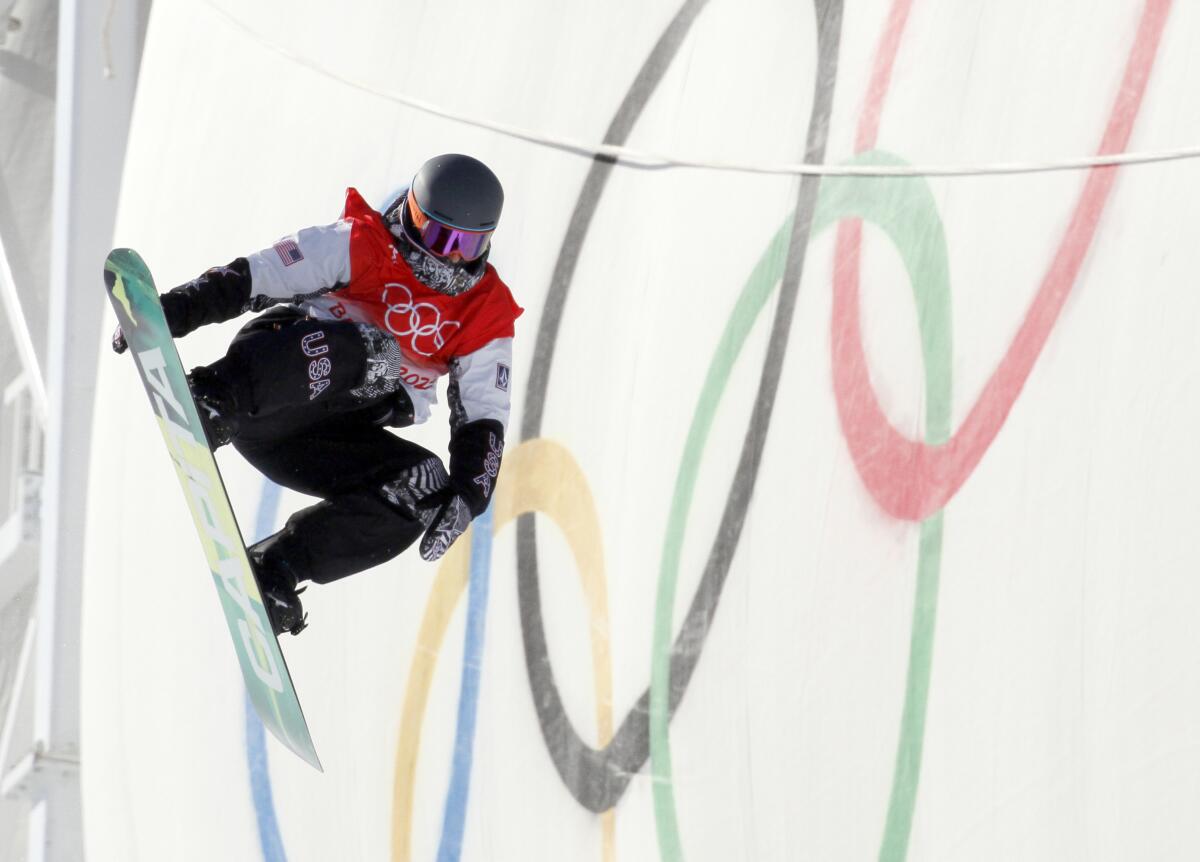
Freezing weather on the biathlon course had some competitors fumbling with their rifles, taking extra time to aim at distant targets. And local forecasts predicted the chill will continue through next week.
Wilson learned his lesson during those first practice runs, saying: “We have some stuff we can put on … you’d think I would know it by now, but I don’t.”
Though a snow-block wall shields the moguls run, those 20 feet of exposed chairlift got him. He figured to be better prepared by Sunday but still failed to make the finals, finishing 25th in men’s moguls.
At least he could enjoy the clear, black sky that comes with this merciless season in China.
“So it’s really pretty,” he said. “But, yeah, it’s really cold.”
More to Read
Go beyond the scoreboard
Get the latest on L.A.'s teams in the daily Sports Report newsletter.
You may occasionally receive promotional content from the Los Angeles Times.
